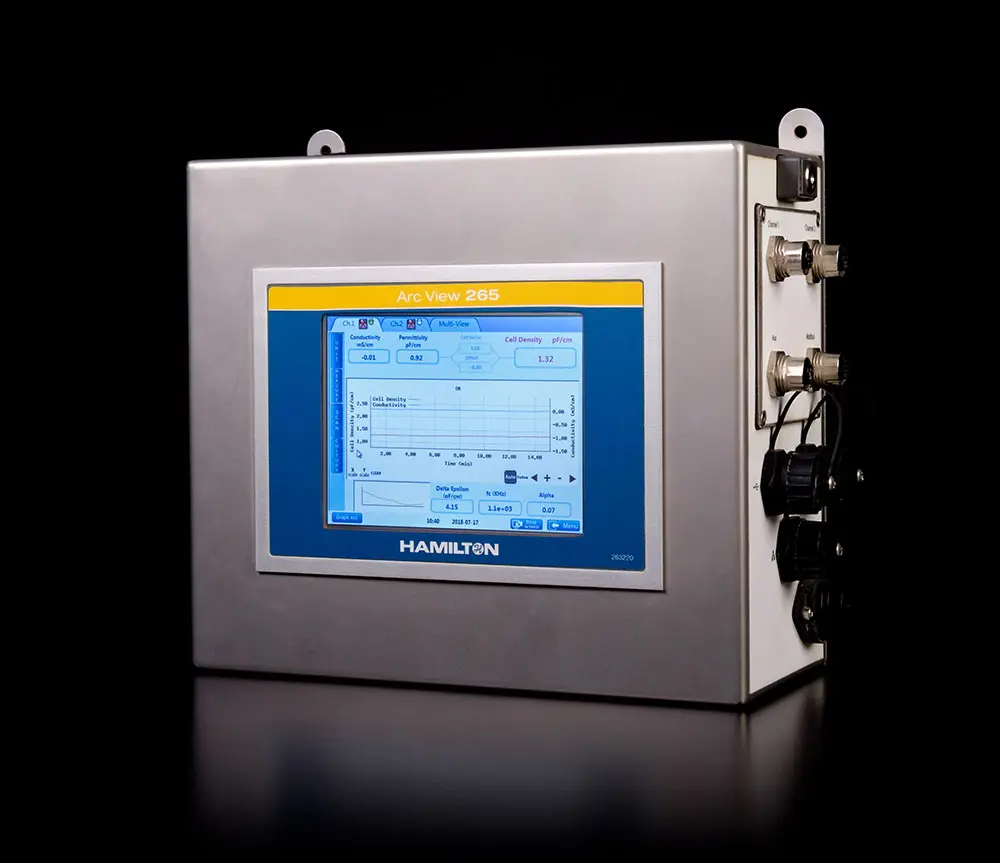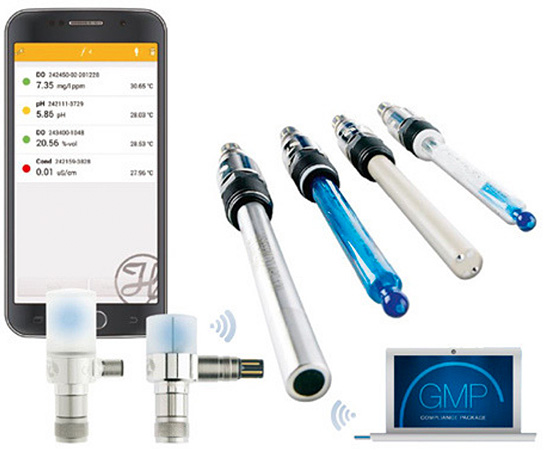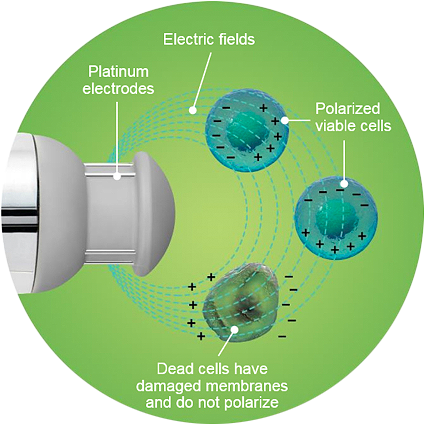Process control is of major importance for both biological fermentations and cell culture.

Online sensors routinely used during a process are only able to provide some feedback on the process state, but not on the state of the actual cells. For example, a decrease in pH and/or oxygen content is not always an indication of healthy cells.
To get more information about the cells, you normally have to take offline samples on a daily basis for analysis. However, this approach only offers a window into the past and at a specific time. Important changes occurring in the process between sampling may not be noticed, and as a result left uncontrolled.

To help overcome these limitations, Electrolab Biotech Ltd* supplies Hamilton cell density monitoring systems. These can be easily integrated with the Electrolab bioreactor system range, or the majority of other manufacturers’ equipment. These cell density systems can also be used as stand-alone devices. They are suitable for use in both autoclavable and steam-in-place (SIP) bioreactors and provide invaluable additional information regarding your process; thus facilitating process optimisation in research & development and process quality monitoring in production.

The system consists of an Arc View Controller (available in two or four channel formats) and an appropriate sensor, which collects and records either viable cell density data (using an Incyte sensor) or total cell density (using a Dencytee sensor). Alternatively, both types of cell density sensors can be used at the same time to gain full insight into your fermentation process.
In addition to cell density values, it is also possible to wirelessly record and display data from other Hamilton Arc sensors**, eg. pH and dissolved oxygen, and view all these measured parameters on a single screen.
*Electrolab Biotech Ltd is an authorised supplier of Hamilton products.
**Additional Hamilton Arc sensors are also available from Electrolab Biotech Ltd.

Incyte allows the online measurement of the viable (producing or living) cell density in a bioreactor in order to gain more process information. Use of this technique allows the operator to detect any process deviations at an early stage to increase yield and, as a result, lower the production cost.

The measurement principle is based on capacitance; the cells around the tip of the sensor are charged and start to act in the same manner as a tiny capacitor.
The charge produced is measured by the sensor, which gives an accurate reading of the viable cell density.
Only cells with an intact membrane are able to hold the charge, so any debris or lysed (dead) cells will not interfere with the measurement. This approach is an ideal solution for processes where traditional optical density systems are found to be not particularly accurate (eg; where adherent cells are grown on micro-carriers).
In summary, Incyte sensor is able to detect up to 8x109 mammalian cells per mL and up to 200 g/L Cell Dry Weight (CDW) for bacteria, in conductivity range of 2-50 mS/cm.

Dencytee allows simple online measurement of cell growth by providing reliable total cell density values, particularly important during exponential phase. This approach allows the operator to detect any process deviations. Valuable process information is obtained at a relatively low cost when compared to viable cell monitoring.

The Dencytee system operates according to the Beer-Lambert law, where the cell density is correlated to the absorption of a specific wavelength of light across a defined path. As the system operates at near-infra red (NIR) wavelengths (880nm), the media colour and/or composition will not have any effect on the results.
Many other turbidity sensors use constant light source, which has notoriously poorer linearity within the sensitivity range) and as a result require different optical path lengths for different density ranges, which is not always feasible.
Hamilton has a different approach using variable and adjustable light sources, enabling to expand the linearity range enormously. So, a fixed optical cell path length of 5 mm works successfully in a variety of cases, providing extra advantages to the user.
As a result, Dencytee sensor is able to detect a wide range of up to 7x108 mammalian cells per mL and up to 100 g/L Cell Dry Weight (CDW) for bacteria, in optical density range at 880nm of 0-2500 absorbance.
